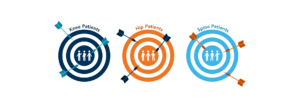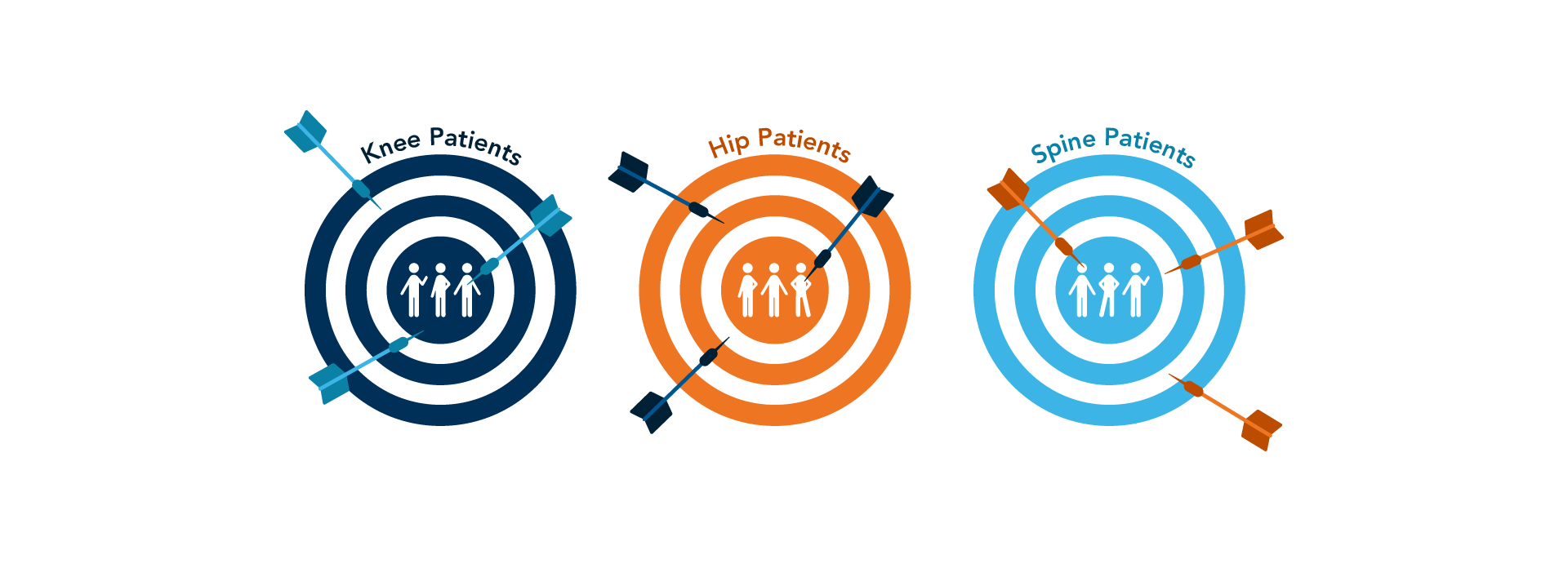Healthcare Marketing Targeting Results in Higher Conversion
Healthcare providers face a unique challenge when it comes to healthcare marketing targeting. They need to reach the right patients, at the right time, with the right message, all while staying compliant with industry regulations. It’s a delicate balance that requires careful planning and execution. However, the rewards can be significant, especially when you use targeted messaging to increase conversion rates.
What Is Healthcare Marketing Targeting?
Healthcare marketing targeting includes delivering highly personalized and relevant messages to specific audiences. In the case of healthcare providers, it means identifying and targeting patients who are most likely to benefit from your services. Healthcare marketing targeting is based on the idea that increased specificity equals increased conversion. In other words, by tailoring messages to the needs and interests of specific patients, you can significantly increase the likelihood that those patients will take action, whether that’s booking an appointment, scheduling a consultation, or filling out a contact form.
To make healthcare marketing targeting effective, you need to actively target the patients that will bring the most value to your healthcare organization and allow you to maximize the return on your marketing investment. This means finding high-value patients that best fit your specialized expertise, rather than wasting money on a broad audience that may not be interested in your services.
Identify Patients Who Bring the Most Value
Recognizing high-value patients is a critical step for maximizing your marketing investment and increasing conversion rates. With the help of patient data analysis, you can identify patterns and trends that help you understand which patients are most likely to benefit from your services. This information can be used to create a profile of the ideal patient, taking into consideration factors such as demographics, medical history, and behavioral patterns.
One of the most powerful tools for healthcare marketing targeting is predictive analytics. By analyzing hundreds of healthcare-related variables, you can accurately predict risk among consumers and identify the patients who are most likely to benefit from your treatments or services, helping you to anticipate their next healthcare need.
In other words, data-driven analysis helps you answer important questions that shape your healthcare marketing targeting strategy. For example, which patient segment is most likely to require knee replacement surgery? Once you have this information, you can create targeted ads and messaging that speak directly to the needs and concerns of those patients. You may use keywords such as “knee replacement surgery” or “knee joint pain” to ensure that your ads appear at the top of search results when patients are actively searching for those services. You can also make sure to create ad copy that covers possible issues that may trouble knee replacement surgery patients, such as post-surgery pain management or recovery time.
 Use Targeted Ads
Use Targeted Ads
Delivering targeted ads is a crucial component of effective healthcare marketing targeting. By using paid search and social media ads, you can craft personalized, relevant messages and deliver them to customers that you want to become your patients.
Let’s say you specialize in dermatology and want to use Google Ads to target patients who are actively searching for skincare and beauty services in your area. You can begin by selecting relevant keywords related to your services, such as “dermatologist near me” or “skin care clinic near me.” You can also use negative keywords to exclude irrelevant search terms.
The next step would be to create compelling ad copy that highlights your expertise and offers a clear call to action. You may want to include information about your specialized services, such as medical-grade skin treatments or cosmetic procedures.
You should also choose to target your ads to specific geographic regions or audiences, such as patients within a certain distance from your practice or patients who are interested in beauty and skincare. In addition to this, you can set a daily or monthly budget for your ad campaign, use conversion tracking and analytics to monitor the performance of your ads and adjust them based on performance and ROI.
As a result, you can increase visibility and attract more patients who are interested in the services you have to offer, thus improving your conversion rates and growing your practice. Also, in addition to reaching the right patients, you build trust and credibility with your target audience, demonstrating your commitment to providing high-quality care that meets their unique needs.
Evaluate Your Marketing Efforts
Using healthcare marketing targeting goes beyond simply attracting high-value patients — it allows you to measure your success so you can clearly see the value of your marketing efforts. As a result, you can make data-driven decisions about how to allocate your resources to maximize your return on investment (ROI).
You may be thinking that it’s hard to know what caused your patients to make that call to schedule an appointment, but you’re wrong. Over half of the world’s population is online and over 90 percent of Americans have access to the internet, leaving their information to be gathered as they conduct searches, make purchases, or choose their healthcare providers.
With all that data available, it’s not difficult to capture the relevant data and know your ROI. By assigning unique phone numbers to different marketing channels or campaigns, you can see where each patient started interacting with your practice and whether they found you organically or through your ads. On top of that, adjusting ad targeting and messaging strategies based on real-time data helps you achieve better results with less time and effort, while also growing your practices and providing high-quality care to your patients.
Fine-Tune Your Healthcare Marketing Targeting
Healthcare marketing targeting can be a game-changer for healthcare providers, as it enables you to direct your marketing resources toward patients who are most likely to benefit from your services. Once you increase the likelihood that the right patients will take action, you can improve your conversion rates, maximize ROI, and boost the growth of your practice. In addition to this, reaching patients who need you most and adjusting treatment to their needs improves their health outcomes and ensures that your practice is able to thrive in an increasingly competitive marketplace.
However, healthcare marketing targeting can also be challenging, particularly if you’re already stretched thin with other responsibilities. You must comply with strict regulations around patient privacy and data security, which can make it difficult to collect and analyze patient data for targeting purposes. Apart from that, you may not have the time or resources to develop and execute comprehensive targeting campaigns, especially if you’re running a smaller practice.
Despite these challenges, you can still benefit from healthcare marketing targeting efforts. SocialClimb provides you with access to a suite of tools that enable you to improve your healthcare marketing targeting, measure the success of your marketing efforts, and optimize your marketing strategies. The HIPAA-compliant platform offers you a competitive edge by enabling you to efficiently reach high-value patients with personalized messaging, ultimately leading to increased patient acquisition and revenue growth. In addition to this, it’s user-friendly and designed specifically for healthcare providers, ensuring that you have the tools and resources needed to succeed in today’s highly competitive healthcare market.











